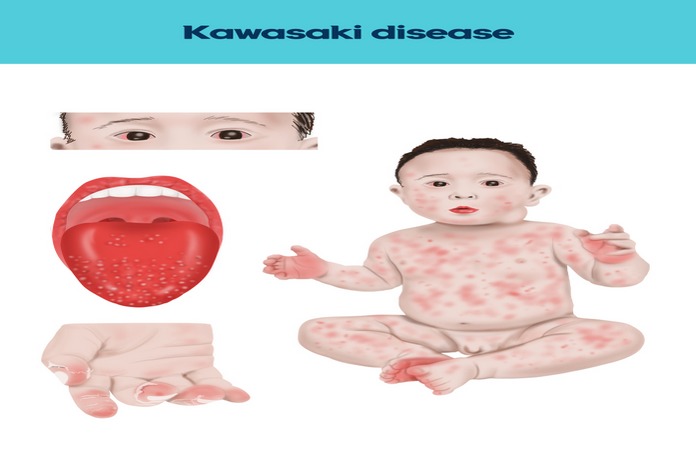Kawasaki Disease
Also known as MLNS (mucocutaneous lymph node syndrome), Kawasaki disease is an illness of the cardiovascular system and affects the blood vessels. It can damage your blood vessels, heart, and other organs. In most cases, it progresses to affect other parts of the body. The inflammation caused by it can also affect other body areas and cause damage to other organs. The cause of Kawasaki disease isn’t clear. Most people who develop it are otherwise healthy. But it does tend to run in families.
It is named after its discoverer “Dr. Tomisaku Kawasaki,” who first described the syndrome in 1967. Kawasaki disease is a condition that affects multiple body systems – it can affect the eyes, joints, heart and blood vessels. It’s not a common condition and anyone can get it, even babies as young as 3 months old. It starts with a high temperature, and it affects the blood vessels. The primary symptoms are usually fever and rash, although coronary artery abnormalities may occur as well. Periods of fever, gradually rising to above 40 degrees Celsius (104 Fahrenheit), last for more than five days and can recur for up to one week after the appearance of a rash.
It may lead to coronary artery disease or a condition in which plaque builds up on the walls of the arteries. In severe cases, massive swelling can cause death – however, this is rare.
A number of children and adults around the world are diagnosed with Kawasaki disease (KD) annually. Each year, KD also causes hundreds of deaths among children in the U.S.
It is a non-contagious disease which usually occurs in children under the age of five years. This article will be explaining a more detailed look at what Kawasaki disease is, who it affects and why.

Pathophysiology Of Kawasaki Disease
Kawasaki disease was derived from the name of the city where it was first reported by Dr. Tomisaku Kawasaki, a Japanese Pediatrician who identified the symptoms of red eyes (also called conjunctival injection) and abnormal enlargement of the lymph nodes as similar to that of rubella (also called German measles).
Kawasaki disease is one of the primary causes of acquired pediatric heart disease in the United States, affecting nearly 50,000 births annually. It is most commonly seen in Asian and Japanese children. Its incidence is increasing among Asian Pacific Islanders. Kawasaki syndrome, a pediatric vasculitis, begins with fever lasting at least five days and often up to 10-14 days and then a constellation of gastrointestinal (GI) tract symptoms such as red eyes, dry throat, and swollen glands. The majority of affected children will go on to develop palpable and visible lesions in the coronary arteries. In rare cases biopsy of arteries or skin may be required to confirm diagnosis.
Kawasaki disease is an acute systemic vasculitis of unknown etiology. Pernicious anemia, neuropathy and thrombocytopenia are common concurrent systemic findings that are not associated with classic rheumatic fever.
Multiple factors hinder pathophysiology of this pediatric vasculitis – including:
- Genetically predisposed children are believed to be more susceptible to Kawasaki disease, although the cause is unknown.
- A genetically determined unusual and uncontrolled immune response to a common stimulus might cause Kawasaki disease, rather than a normal immune response to an unusual environmental stimulus.
- Despite the lack of an aetiological agent in humans, mouse models of Kawasaki disease vasculitis demonstrate similar pathological features and have significantly accelerated research in this area.
- Molecular analysis of blood samples from patients with Kawasaki disease and animal experiments have demonstrated the crucial role of IL-1* in the pathogenesis of this disease and the potential therapeutic utility of targeting this pathway (currently being investigated in clinical trials).

